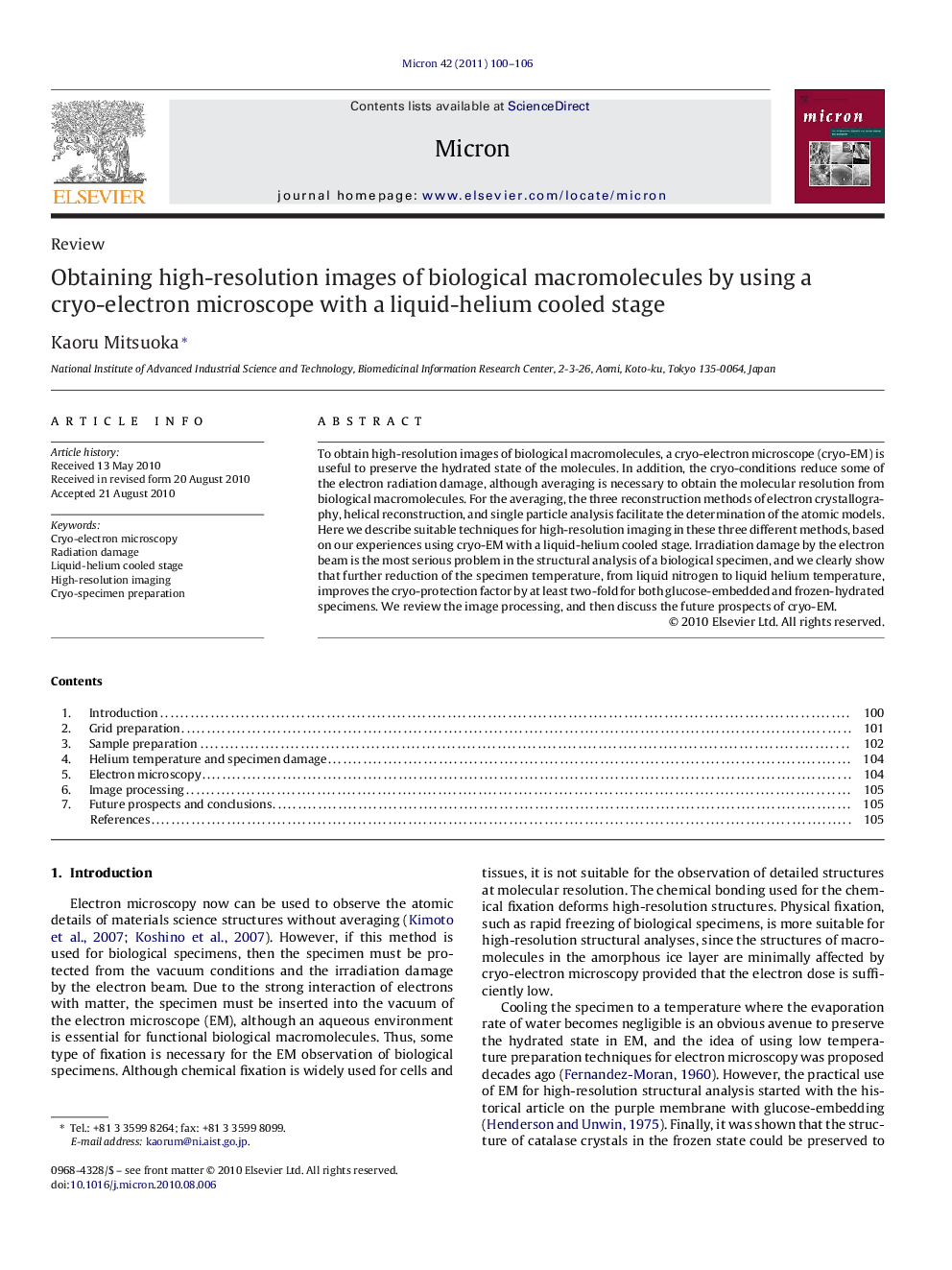| Article ID | Journal | Published Year | Pages | File Type |
|---|---|---|---|---|
| 1589168 | Micron | 2011 | 7 Pages |
To obtain high-resolution images of biological macromolecules, a cryo-electron microscope (cryo-EM) is useful to preserve the hydrated state of the molecules. In addition, the cryo-conditions reduce some of the electron radiation damage, although averaging is necessary to obtain the molecular resolution from biological macromolecules. For the averaging, the three reconstruction methods of electron crystallography, helical reconstruction, and single particle analysis facilitate the determination of the atomic models. Here we describe suitable techniques for high-resolution imaging in these three different methods, based on our experiences using cryo-EM with a liquid-helium cooled stage. Irradiation damage by the electron beam is the most serious problem in the structural analysis of a biological specimen, and we clearly show that further reduction of the specimen temperature, from liquid nitrogen to liquid helium temperature, improves the cryo-protection factor by at least two-fold for both glucose-embedded and frozen-hydrated specimens. We review the image processing, and then discuss the future prospects of cryo-EM.
